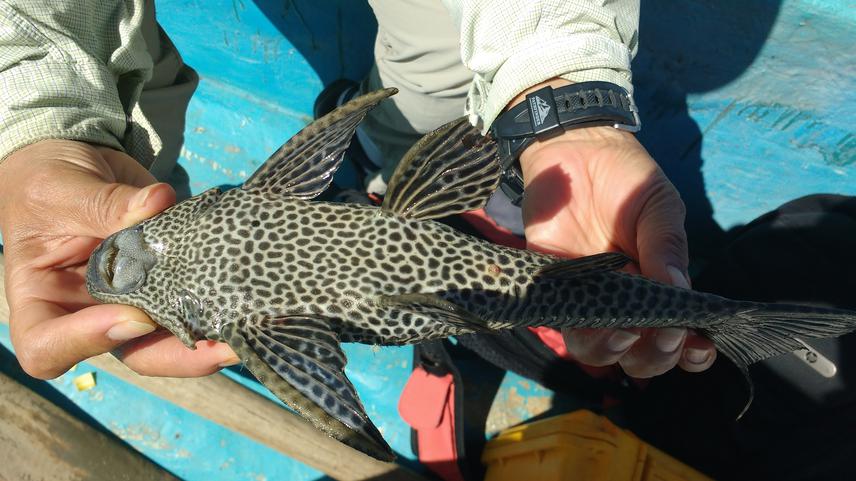Yasmin Quintana
The invasive armored catfish has expanded throughout the Usumacinta Basin, which harbors the richest ichthyofauna in Central America, leading to concerns for conservation and fisheries. This project will investigate the how the armored catfish abundance influence fish assembly patterns in the upper Usumacinta, including areas within the Maya Biosphere Reserve.
The analysis will provide information of invasion threshold levels to inform impact severity on different components of fish assemblages, including the influence of environmental and spatial factors on native biodiversity. This information will be used to identify threatened fish species and relevant abiotic factors to develop conservation plans for native fishes.

Pleco usumacinta. © Yasmin Quintana.
Invasive species are considered one of the main causes of biodiversity loss and Global Change. Armored catfishes are native to South America, the region with the most functionally diverse ichthyofauna in the world. In a short-time span, armored catfishes have become one of the most invasive fishes in the world, including the Usumacinta River Basin and parts of the Mayan Biosphere Reserve in Guatemala. The Usumacinta River is a critical area for conservation, because it harbors the richest ichthyofauna in Central America and this support the livelihoods of many local communities.
Armored catfishes pose a particularly strong threat to native biota in the Usumacinta, because they modify the physical environment and cause disruption of ecosystem processes. To evaluate the impact of the armored catfish invasion on the native biota, it is necessary to look into different pathways; however, the mechanisms by which invasive species modify ecosystems and communities are poorly understood.
This project seeks to improve understanding of the armored catfish invasion on the native fish assemblages. We will study how variation in the abundance of armored catfish impacts native fish assemblages along longitudinal river gradients at multiple sites within the San Pedro and La Pasion rivers, two tributaries within the Usumacinta Basin that are considered highly invaded. First, we will generate ecological information to understand patterns of the catfish invasion in two large tributaries, San Pedro and La Pasion rivers, under different management categories. Secondly, we will generate the first baseline of ecological knowledge of the fish assemblages in the upper Usumacinta in Guatemala. Thirdly, we will apply a risk assessment approach that allows to identify and quantify invasion threats over native species when data previous the invasion is inexistent or uninvaded comparable sites are not available. We will look at the impact on community structure (body mass, abundance, diversity) using the abundance-effect curve approach (Parker et al. 1999)in areas with high, medium and low abundance. Finally, we will improve our understanding of the environmental and spatial factors influencing the catfish invasion.
With this study, we will provide a scientific baseline that will support the strategies to manage the armored catfish in the basin. Also, this project will provide relevant information on fish distribution patterns that allow managers to improve conservation in the basin and management of fish resources that support the livelihoods of indigenous communities in the Usumacinta River.